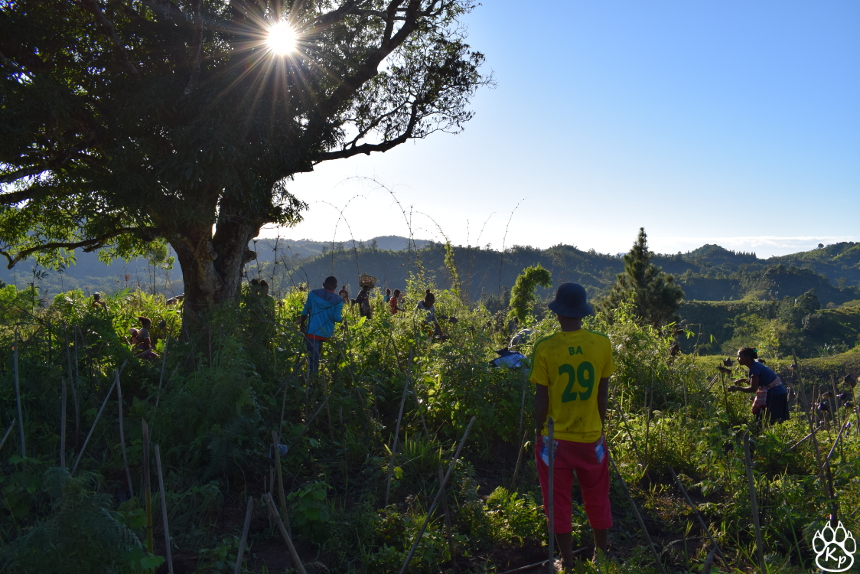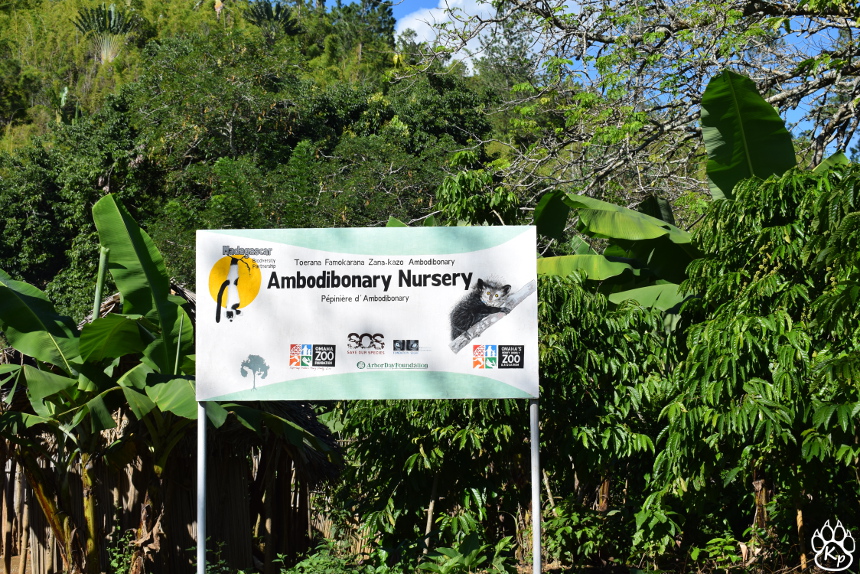
A very important part of saving an endangered species is to protect, and when possible restore, its habitat. Madagascar Biodiversity Partnership is working on a project to reconnect the fragmented forest between Vavotavy and Sangasanga, allowing the lemurs living in these main forests and in the smaller fragments, to disperse safely.
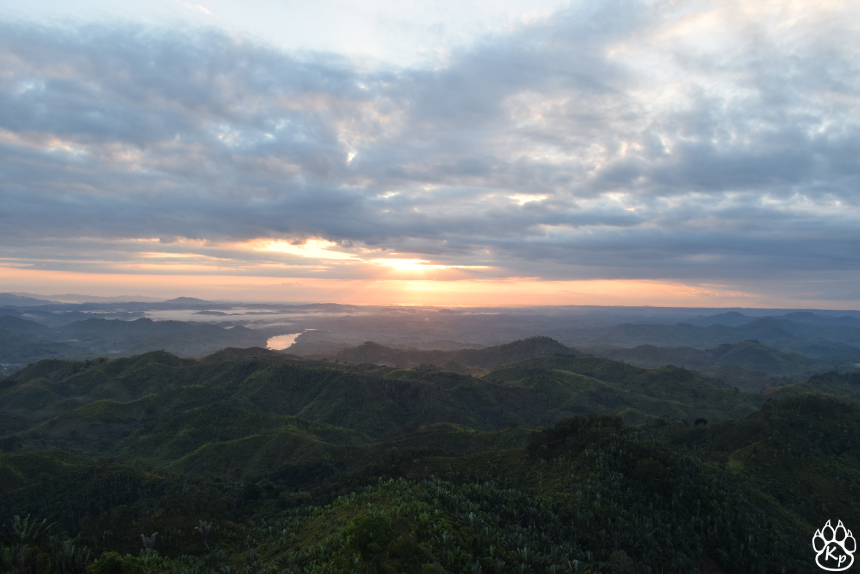
The reforestation project is divided in two different sectors: early species and forest species. The first step in the reforestation process is to plant species that will prepare the land for the more demanding forest species. For this task, in the Kianjavato commune, they plant Acacia and Bonary, two plant species that grow fast and in any terrain. After 5 years, these will have grown from small seedlings to large plants, able to create the shade that forest species require to grow. Forest species are the species that lemurs use for food or rest, and sometimes the seeds of these species are gathered directly from the poop of the lemurs!
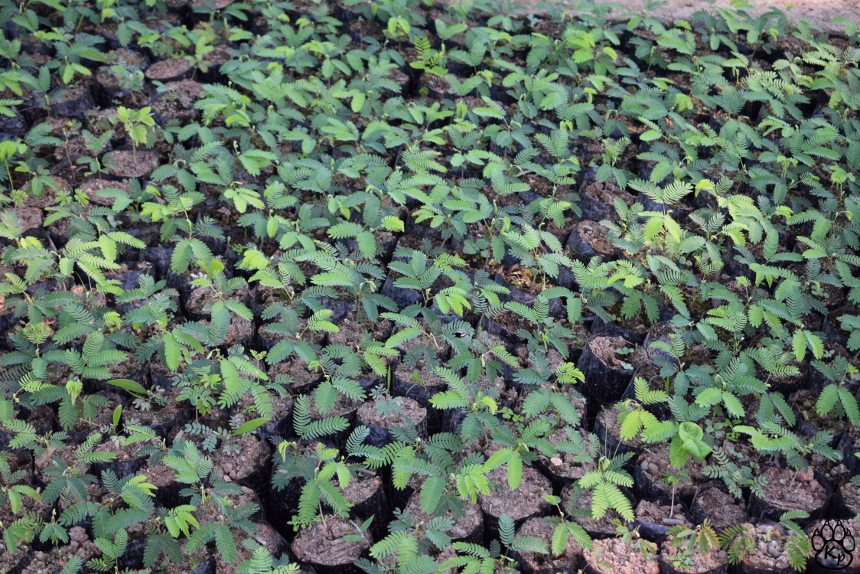
In order to promote the growth of these plants, you cannot simply throw seeds on the land and expect it to grow; this is why there is a whole system and a lot of people working for this reforestation project. Along the road, from Vatovavy all the way past Kianjavato, there are more than a dozen nurseries where plants are grown from seeds to 25cm tall seedlings. Volunteers and graduate students help manage this project, counting all seedlings weekly and distributing funds to the workers and nurseries.
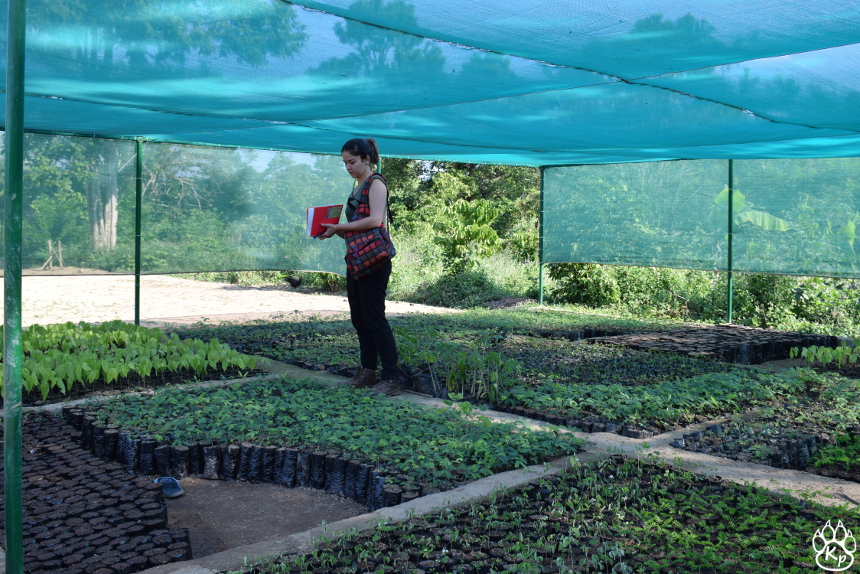
Each nursery has a manager that takes care of daily management and employs a group of five or six single mums from the closest village. While gossiping and sharing stories, these single mums take care of all the jobs in the nursery: from sorting compost, to separating seeds from pods, then filling small pots with compost, where the seedlings just sprouted in the hot beds will be moved to allow growth and transportation.
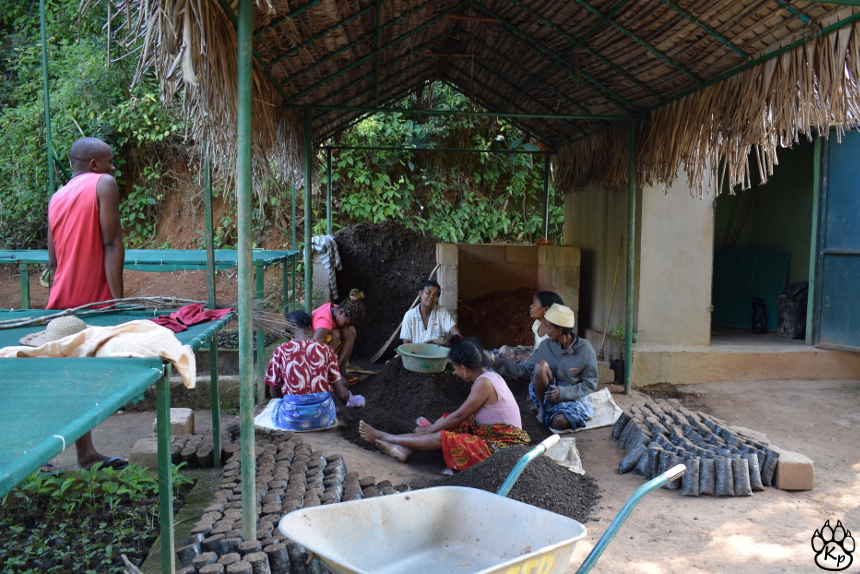
When the seedlings are grown enough, it is time for planting. This usually occurs in two sites twice a week, each time planting 2500 plants for a grand total of 10,000 plants each week! Preparation of the planting site is done by men from the community, employed to dig holes, spread compost and carry the seedlings. This can be hard work, as the seedling weight a lot and some planting sites are very far away from the nurseries and not always accessible by car.
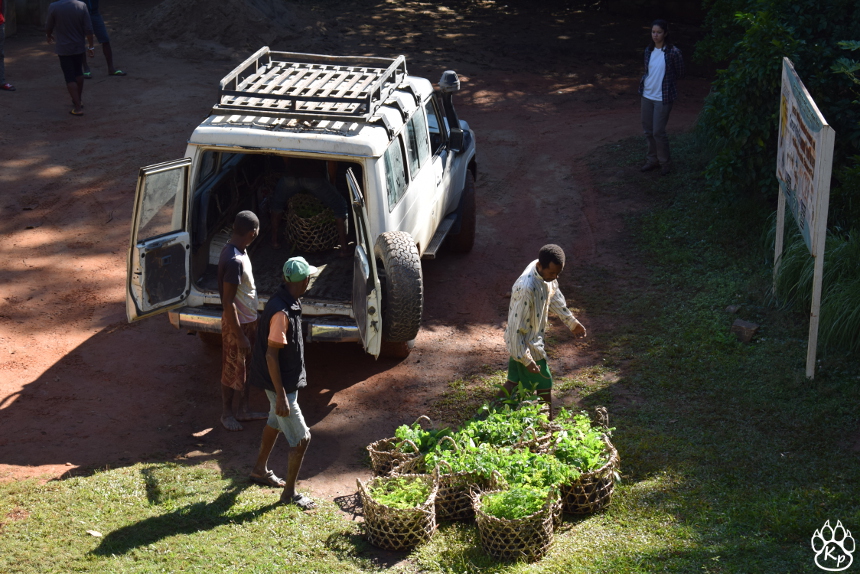
On planting day both men and women from the community participate in transplanting the seedlings in the holes, closing the holes and covering surrounding ground with pieces of plants that retain moisture and help growth.

This project, as well as helping recreate the habitat for endangered species, hires a lot of people from the community, which helps them economically and teaches them the advantages of a sustainable use of the land.
